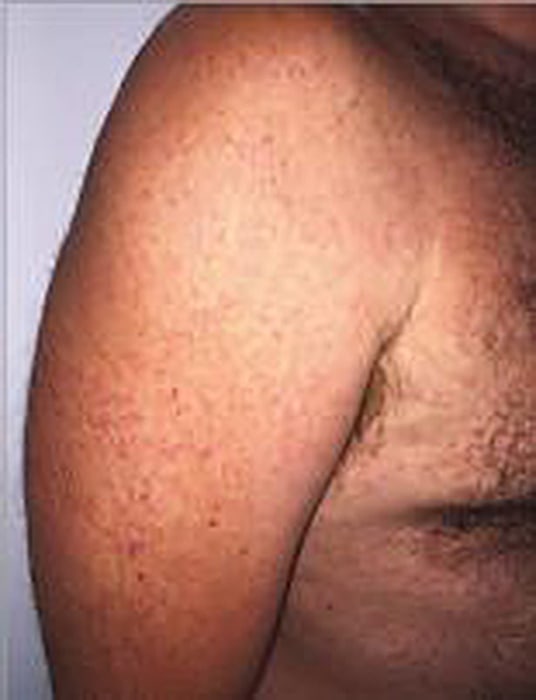The man's Zika infection started with a headache. Within a day, a red rash formed on his hands and arms and spread to his body. By the third day, the rash had moved all the way down his body and his feet were on fire.
A team of New York doctors who treated a Zika patient said the symptoms are distinctive — and they want doctors around the country to know what they look like so they can be on the lookout.
"Itching was not a major feature" for the unidentified patient, they wrote in their report, published in the Journal of the American Medical Association's JAMA Dermatology.
"The patient also noted that his eyes appeared 'bloodshot.' As the eruption faded on the upper body, it became more apparent on the lower body," they wrote.
Related: Zika is Coming and We're Not Ready

As mosquito season starts in the U.S., local outbreaks are possible in areas where Aedes aegypti mosquitoes circulate. That includes much of the south and spots as far north as Kansas City and New York City. The virus is sexually transmitted, too.
So medical professionals will need to be able to tell if someone has Zika, or some other infection.
The virus appears to cause mild symptoms in most people. Even in those it makes sick, it's usually over in about a week.
For the patient in New Hyde Park on Long Island, New York, it was over in eight days.
"In February 2016, a 44-year-old man returned from a 6-day vacation in Puerto Rico. Within three days of his return, the patient experienced headache and lethargy," Dr. Amit Garg and colleagues at Hofstra Northwell School of Medicine wrote.
"On day three, the patient noted the eruption to be most pronounced on the knees and feet, and he described burning pain of the feet. He developed joint pains involving the wrists, knees, and ankles on day four."
A blood test did not detect Zika but a urine test did, Garg's team said.
The symptoms match reports from areas hard hit by Zika, including Brazil and parts of Puerto Rico. Some patients have fever and some do not. About 90 percent of those who have any symptoms at all report a raised, red rash that is often itchy or uncomfortable.

There's no treatment for Zika besides a drug such as Tylenol or acetaminophen to ease the pain. Ibuprofen and aspirin are not recommended because they could raise the risk of bleeding. One man in Puerto Rico died from bleeding after he had Zika.
Doctors want to watch for it because it can cause birth defects if pregnant women are infected, and it appears to sometimes cause neurological conditions such as the paralyzing Guillain-Barre syndrome, which usually puts patients into the hospital.











0 Comments